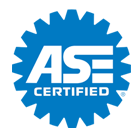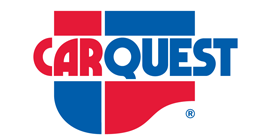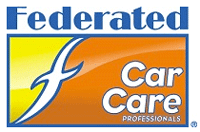On Board Diagnostics for Your vehicle
Posted February 24, 2010 3:00 AM
Today we're going to talk about on-board diagnostics and the questions we hear from folks around Idaho Falls, ID, who need answers about diagnostic services. They want to know what diagnostics are, what's involved and what the benefits are. They really want to understand the value of diagnostic scans by a trained technician in Idaho Falls.
These are valid concerns. If you don't understand something it's really hard to know its value. Let's start with some history.
Since 1996, all cars and light trucks in Idaho Falls, ID, have been required to use a standardized diagnostic system to help repair technicians determine what's wrong with your vehicle. The diagnostic system works with the vehicle's Engine Control Module – the computer that controls many engine functions.
The computer monitors dozens of components and processes. Depending on what the sensors read, the computer will make adjustments to compensate for conditions and minor problems. When there is a condition that it can't adjust for, the computer will turn on the Check Engine light.
It is also called the 'service engine soon' light on some vehicles. The warning light signals you to get into your local service center so that the trouble code can be read and the problem can be fixed. Your service center will have a scan tool and powerful software that will help the technician diagnose the problem.
If you've searched for Check Engine light on the internet, you may have seen that you can buy an inexpensive scanner or go to an auto parts store to have the trouble code read to tell you exactly what's wrong.
That's a common myth. The code itself doesn't tell you what's broken. It starts you looking in the right place. It tells you what engine parameter is out of range – but it won't tell you what's wrong or how to fix it.
Let's say you think your daughter has a fever. You take her temperature and it reads 102 degrees F/38.9 degrees C. You've confirmed a fever, but you don't know what's causing it. Is it a 24 hour flu, an infection, appendicitis or leukemia? A fever is a symptom of all of these medical problems, but it takes a skilled physician's examination and additional diagnostic tests to find out what is actually causing the fever.
An example of a trouble code could be: P0133, which reads 'Bank 1 sensor 1 circuit slow response.' This means that the front oxygen sensor has a slow response time to changes in the air-fuel mix. If that's all you knew about cars, you would think your oxygen sensor was broken and would replace it. Now, it could be the oxygen sensor – but it could also be a bad or contaminated airflow sensor, exhaust leak, electrical problem, an intake manifold leak or any of a number of other things.
You can imagine a lot of oxygen sensors have been replaced because of that code. So the on-board diagnostics point the way to where the trouble lies, but it takes some skill and high-tech equipment to actually pinpoint the problem. The cheap scan tools that a consumer can buy do not have the ability to retrieve some of the operating history that's stored in the engine control computer. That history's very helpful in diagnosing the problem. Service centers like All Things Automotive & Diesel Service invest a lot of money in high-end diagnostic tools to help solve the mystery and get you back on the road as soon as possible without replacing a lot of parts that don't need replacing.
So, on-board diagnostics provide a powerful starting place for a highly-trained, well-equipped technician to get to the bottom of your problem. When your Check Engine light comes on, get it checked at All Things Automotive & Diesel Service. If the light burns steadily – don't panic. Get in to All Things Automotive & Diesel Service soon to have the engine scanned. A flashing Check Engine light means that there is a severe engine problem. Get in as soon as you can – waiting too long can lead to very expensive damage.
And try to not drive at high speed or tow or haul heavy loads with a flashing Check Engine light.
Make an appointment with All Things Automotive & Diesel Service to have your on board diagnostics analyzed.
All Things Automotive & Diesel Service
1997 Walton Ave #C
Idaho Falls, ID 83401
208-523-3903
When Are Your Tires Worn Out?
Posted February 16, 2010 3:00 AM
Hey Idaho Falls area drivers, are your tires worn out? What is the standard for our ID streets? How can you tell on your vehicle?
While there may be legal requirements for the Idaho Falls area, there are safety concerns that go beyond meeting minimum replacement mandates.
Two-thirty-seconds of an inch is the depth of the tire tread wear indicator bars that US law has required to be molded across all tires since August 1, 1968. When tires are worn so that this bar is visible, there's just 2/32 of an inch – 1.6 millimeters – of tread left. It's that level of wear that's been called into question recently.
We're referring to the tread depth on a tire, it can't move surface water out of the way and you start to hydroplane.
In a safety study, a section of a test track was flooded with a thin layer of water. If you laid a dime on the track, the water would be deep enough to surround the coin, but not enough to cover it.
A car and a full-sized pick-up accelerated to 70 miles per hour, or 112 kilometers an hour, and then made a hard stop in the wet test area. Stopping distance and time were measured for three different tire depths:
- New tire tread depth
- 4/32 of an inch, or 3.2 mm
- 2/32 of an inch, or 1.6 mm
So what happened with the 2/32 inch/1.6 mm tires on the car? Get this – when the car had traveled the distance required to stop with new tires, it was still going 55 mph/89 kph. Stopping distance was nearly doubled to 379 feet/116 meters, and it took 5.9 seconds.
Wow! That means if you barely have room to stop with new tires, you would hit the car in front of you at 55 mph/89 kph with the worn tires.
Now, with the partially worn tires – at 4/32 of an inch, or 3.2 mm – the car was still going at 45 mph/72 kph at the point where new tires brought the car to a halt. It took nearly 100 feet, or about 30 meters, more room to stop and 1.2 seconds longer. That's a big improvement. We can see why Consumer Reports and others are calling for a new standard.
Of course, stopping distances were greater for the heavier pick-up truck.
How do you know when your tires are at 4/32 inch or 3.2 mm? Easy; just insert an American quarter into the tread. Put it in upside down. If the tread doesn't cover George Washington's hairline, it's time to replace your tires. With a Canadian quarter, the tread should cover the numbers in the year stamp.
You may remember doing that with pennies. A penny gives you 2/32 inch, or 1.6 mm, to Abraham Lincoln's head. The quarter is the new recommendation – 4/32 inch, or 3.2 mm.
How do people feel about replacing their tires earlier? Well, tires are a big ticket item and most people want to get the most wear out of them that they can. But do you want that much more risk just to run your tires until they are legally worn out?
For us, and we would guess for many, the answer is "no".
All Things Automotive & Diesel Service
1997 Walton Ave #C
Idaho Falls, ID 83401
208-523-3903
The Harm in Skipping an Oil Change for Idaho Falls Drivers
Posted February 12, 2010 1:00 AM
People in Idaho Falls have been hearing a lot about higher oil change intervals these days. Maybe you're wondering: What are the key issues?
Some new vehicle manufacturers are now recommending much higher oil change intervals than they have in the past. As much as 5,000 to 8,000 miles (8,000 km to 13,000 km) or more. This practice came under scrutiny when four of the largest new vehicle manufacturers announced that owners like those in Idaho Falls were experiencing engine damage resulting from these higher oil change intervals.
The manufacturers' standard oil drain service for particular vehicles was scheduled at around 7,500 miles/12,000 km. People following these recommendations were experiencing engine damage. It turns out that oil sludge was building up. This caused small oil passages to clog and engine parts to fail.
What causes oil sludge? It's a factor of time and mileage. There are hot spots in every engine that cause oil burn off that leads to sludge. Also, water from normal condensation can build up in the oil. This water also creates sludge. Severe driving conditions lead to more rapid sludge formation.
Severe driving around Idaho Falls includes short trips under four miles (six and a half km) or trips under 10 miles/16 km in freezing conditions. The engine just doesn't get warm enough for the water in the oil to evaporate.
Severe conditions are at the heart of the problem. Stop-and-go driving, towing, dusty conditions, heavy loads, very hot or very cold temperatures, a car top carrier – these are all conditions that would suggest that the severe service schedule should be considered.
The severe service schedule has much shorter oil change intervals. People in Idaho Falls just need to honestly evaluate how they drive to determine if they should change their oil closer to the severe service schedule or to the standard schedule.
Some types of vehicle will give oil change reminders. But it's important to know how that reminder is determined. For some, the reminder simply comes when the standard mileage interval has rolled around. Others use a computer algorithm that takes into consideration the number of cold starts, trip length, engine temperature and so on. It's programmed to approximate where on the standard/severe service spectrum you fall. Some more expensive vehicles actually have sensors that test the cleanliness and effectiveness of the oil.
For the rest of us, better safe than sorry should be the guiding principle. Talk with your Idaho Falls service advisor at All Things Automotive & Diesel Service and work it out together. Find out what kind of oil the factory sends out in your vehicle. Sometimes it's a premium grade that costs more than standard oil – but it may be what's needed to meet a higher factory recommended interval.
If you're realistically conservative, standard grades of oil will take care of you year after year. If you want to push the limits, ask for a premium grade oil to give you extra protection.
So, what happened with those manufacturers with the problems from higher oil change intervals? They ended up extending the engine warranty for parts that were affected by oil sludge. But they had a stipulation – they lowered the oil change interval and the vehicle owner had to provide proof of oil changes at the new lower interval to keep the extended warranty.
All Things Automotive & Diesel Service
1997 Walton Ave #C
Idaho Falls, ID 83401
208-523-3903
Maintaining Your Older Car in Idaho Falls, ID
Posted February 5, 2010 2:00 AM
The government mandates a lot of equipment on cars in Idaho Falls, ID: emission devices and control computers, safety equipment like airbags and crash worthiness requirements. All of this is great for the Idaho Falls motoring public, but it does add quite a bit to the price of a new vehicle.
Because new vehicles are more expensive, people in the Idaho Falls area are driving their old vehicles longer. The average vehicle is now over nine years old. Two thirds of vehicles on the road in ID have more than 75,000 miles (120,000 km) on them. As cars age, their performance drops, they have difficulty idling for long periods and are more sensitive to weather extremes. Fortunately today's cars are up to the challenge – but they need a little help to keep on goin'.
Give All Things Automotive & Diesel Service a call at 208-523-3903 to schedule your next maintenance.
Some owner's manuals don't specify service requirements at higher mileage. That doesn't mean it doesn't have to be done. In fact, it's more important than ever to stay on top of routine maintenance for cars with more than 75,000 miles (120,000km).
First, just extend regular service intervals out: for instance a service that's recommended every 15,000 miles (24,000 km) should be performed at 15,000, 30,000, 45,000 and 60,000 miles (24,000, 48,000, 72,000 and 96,000 km) and so on. Because of the additional stress older engines experience, the severe service maintenance schedule is more appropriate than the regular schedule; ask your service advisor. Watch for leaks; seals and gaskets dry out over time and don't hold the fluids as well as they used to.
It's also time to make sure you have a good technician, like those here at All Things Automotive & Diesel Service. There are some services and replacements that are scheduled after you put on some clicks, like timing belts, valve train adjustments, suspension, anti-lock brake service, air bags, etc. And unexpected repairs down the road are just par for the course. Check for unusual sounds, smells or the way your car feels. These could be hints that trouble's brewing. Better to catch it early before it turns into a costly repair.
And a regular wash and wax will help maintain your car's appearance. One of the things you can do to really help your high mileage vehicle is to begin using high mileage formulation fluids. There are special engine oils, coolants, and transmission and power steering fluids that are formulated for cars that have a few clicks on the old odometer.
High mileage oil is designed to condition seals and gaskets, reduce wear and avoid premature burn off. Older engines are dirtier inside – and dirty engines contaminate their oil faster. High mileage oil has special additives that clean the engine, removing sludge deposits over time. The result is less stress on the engine, better fuel economy and excellent wear protection.
Studies have even shown that using high mileage fluids early will actually prevent some of the problems of high mileage vehicles. So once you hit around 50,000 miles (80,000 km), consider stepping up to high mileage formulations. High mileage fluids cost a bit more than standard fluids because of the additional additives, but they can be worth their weight in gold in terms of preventing repair costs down the road. It does cost more to properly maintain a higher mileage vehicle – but it's way cheaper than a new car payment!
All Things Automotive & Diesel Service
1997 Walton Ave #C
Idaho Falls, ID 83401
208-523-3903















